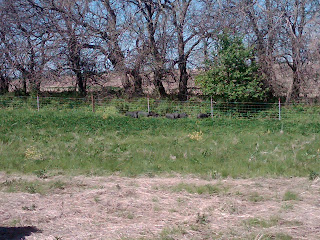Little bit of a story first, my kids first looked at their bowls of bean soup with disdain and distrust. They like kidney beans, but all these funky beans, all in one pot? No way. So, I started eating one bean at a time, sharing the back story and the magic of each of the six beans.
1) The ability to sing like an opera star! Ahhhhhhh! LALALALALA! Figaro!
2) Jumping as high as a monkey!
3) Dancing forever!
4) The antidote to magic non stop dancing
5) The ability to sneak like a ninja
6) Super strength silly beans!
The carrots get eaten for night vision, the onion for stinky monster breath, the ham for protein and brain power and strong bones, celery for sonic hearing, and.....apples for good health (protection against monster sneezes).
The gobbled the soup. They asked for seconds. Dinner was hilarious. Easy. Frugal.
Without further ado, I present
Super Hero Soup!!!!
Start by running hot tap water, fill a bowl or pot, and cover the beans in the water by 3x the depth and then cover, set aside.
When they are ready to use they take up all of the water. I let them soak all day until an hour or two before the meal time.
In a separate pot, a crock pot or an oven roaster, place a hamhock and sprinkle with seasoning of choice. Salt, spices, and a bay leaf. Do not forget the bay leaf, it is very important.
Add 3 stalks of chopped celery. I like to use the leafy greens of celery too. Next 3-4 large carrots chopped into bite size. 1 large onion, 2 medium tomatoes, and 1 gala apple. Any sourish apple will work, but I like gala or braeburn the best.
Fill the pot with water and roast at 220 degrees Fahrenheit for 8 hours. Low on a crockpot, if that's what you are using.
A good hamhock will have a lot of good, deeply flavoured meat. It is hard to get to when making cuts, but falls of the bone when slow cooked.
This one had two full pounds of perfect, tender ham.
About 2 hours before meal time, drain, rinse, and then add the soaked beans.
Continue to cook until the beans are perfect and tender.
This makes about sixteen servings. I freeze what our family of five doesn't eat.
Recipe: Super Hero Soup
1 2lb hamhock
4 carrots
3 celery stalks
1 large onion
1 apple
2 tomatoes
water
2 cups of bean mix
seasoning and salt
bay leaf
Soak the beans while the meat and veggies simmer all day.
Cook meat and veggies and spices in a pot of water for about 8 hours at 220 degrees Fahrenheit or in a crockpot on low. Add the soaked and drained beans 2 hours before serving and finish cooking.
Serve with a hearty French bread or cornbread.
Jump around and be super silly while eating dinner. Savour the smiles, laughter, and sweet joy of children.













